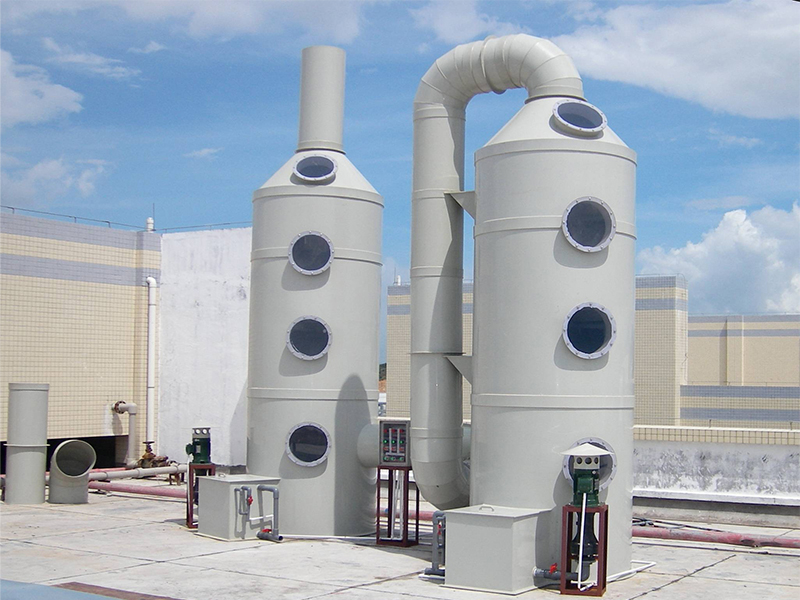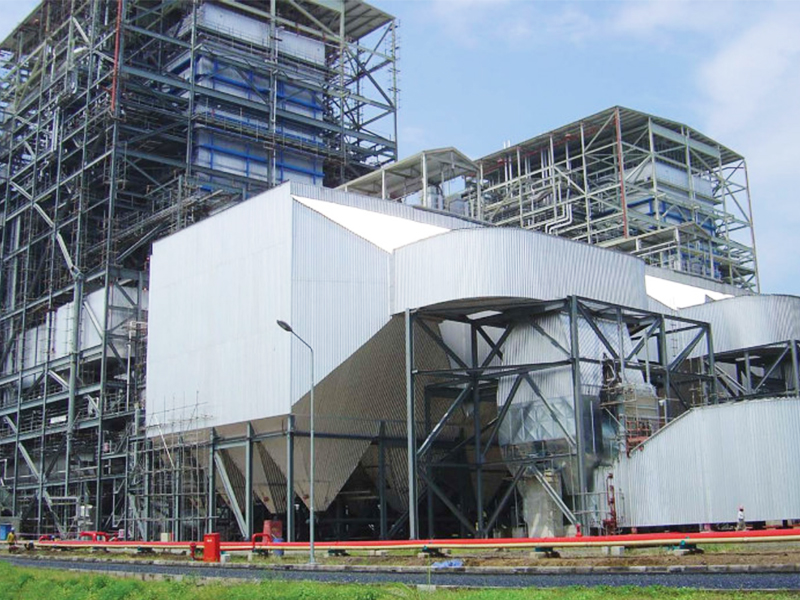0102030405
electrostatic precipitator purifier vertical high-voltage electrostatic precipitator dust collector for powder stainless steel dust remover
The introduction of XJY electrostatic precipitator

Electrostatic precipitators, commonly abbreviated as ESPs, are advanced air pollution control devices that efficiently remove particulate matter, such as dust and smoke particles, from industrial exhaust gases. Their effectiveness and reliability have made them a staple in various industries, including power generation, steel production, cement manufacturing, and more. This article delves into the workings, advantages, types, and applications of electrostatic precipitators.
What are the details of the XJY electrostatic precipitator filter?
An XJY electrostatic precipitator is an air pollution control device that uses electricity to remove suspended particles from an air stream. By charging the particles and then collecting them on an oppositely charged surface, ESPs can effectively capture a wide range of particulate matter, including dust, smoke, and fumes. They are widely used in industries such as power generation, cement manufacturing, and metal processing.
What is the basic structure of the XJY electrostatic precipitation filter?
The XJY electrostatic precipitator consists of two parts: one is the main system of the precipitator; the other is the power supply device that provides high-voltage direct current and the low-voltage automatic control system. The structural principle of the precipitator, the high-voltage power supply system is powered by the step-up transformer, and the dust collector is grounded. The low-voltage electrical control system is used to control the temperature of the electromagnetic rapping hammer, the ash discharge electrode, the ash conveying electrode and several components.
What are the characteristics of the XJY electrostatic precipitators purifier ?
A:Uniform gas flow distribution is achieved by specially designed gas distribution wall confirmed by CFD modeling.
B:Best discharge electrode type ZT24 used
C:Electrode rapping with reliable and durable tumble hammer system is superior to magnetic/top rapping
D:Reliable insulation material design for long-term operation
E:High voltage power supply with T/R unit and controller
D:No ammonia injection required
E:Comprehensive experience in ESP design and project execution for FCC units
What are the features of the XJY electrostatic precipitator purifier ?
Compared with other dust removal equipment, XJY electrostatic precipitator consumes less energy and has higher dust removal efficiency. It is suitable for removing dust of 0.01-50μm in flue gas and can be used in places with high flue gas temperature and high pressure. Practice shows that the larger the amount of flue gas treated, the more economical the investment and operating cost of using electrostatic precipitator.
Wide-spacing horizontal electrostatic precipitator technology
HHD wide-spacing horizontal electrostatic precipitator is a scientific research result developed by introducing and drawing on foreign advanced technology, combining the characteristics of industrial kiln exhaust gas working conditions in various industries in China, and adapting to the increasingly stringent exhaust gas emission requirements and WTO market rules. This achievement has been widely used in metallurgy, power, cement and other industries.
Optimal wide spacing and special configuration of plates
Make the electric field strength and plate current distribution more uniform, the driving speed can be increased by 1.3 times, and the range of captured dust resistivity is expanded to 10 1 -10 14 Ω-cm, which is particularly suitable for high resistivity dust recovery of exhaust gas from fluidized bed boilers, new cement dry rotary kilns, sintering machines, etc., to slow down or eliminate the back corona phenomenon.
Integral new RS corona wire
The maximum length can reach 15 meters, with low corona starting voltage, high corona current density, strong rigidity, never damaged, high temperature resistance and thermal change resistance, and excellent cleaning effect combined with top vibration method. According to the dust concentration, the corresponding corona line density is configured to adapt to the dust collection with high dust concentration, and the maximum allowable inlet concentration can reach 1000g/Nm3.
Strong vibration on the top of the corona electrode
The strong vibration on the top discharge electrode designed according to the dust cleaning theory can be selected by mechanical and electromagnetic methods.
Free suspension of positive and negative poles
The dust collection system and corona electrode system of the HHD electrostatic precipitator both adopt a three-dimensional suspension structure. When the waste gas temperature is too high, the dust collection electrode and the corona electrode will expand and stretch arbitrarily in three-dimensional directions. The dust collection electrode system is also specially designed with a heat-resistant steel belt constraint structure, which makes the HHD electrostatic precipitator have a higher heat resistance. Commercial operation shows that the maximum temperature resistance of the HHD electrostatic precipitator can reach 390℃.
Improve vibration acceleration
Improve cleaning effect: The cleaning quality of the dust collecting electrode system directly affects the dust collecting efficiency. Most electric collectors show a decrease in efficiency after a period of operation. The root cause is mainly due to the poor cleaning effect of the dust collecting electrode plate. The HHD electric dust collector uses the latest impact theory and practical results to change the traditional flat steel impact rod structure to an integral steel structure, and simplifies the side vibration hammer structure of the dust collecting electrode, reducing the hammer drop link by 2/3. Experiments show that the minimum acceleration of the dust collecting electrode plate surface is increased from 220G to 356G.
Small footprint and light weight
Because the discharge electrode system adopts a top vibration design, and breaks the convention to creatively adopt an asymmetric suspension design for each electric field, and uses the shell computer software of the American Environmental Equipment Company to optimize the design, the overall length of the electric dust collector is reduced by 3-5 meters and the weight is reduced by 15% under the same total dust collecting area.
High-assurance insulation system
In order to prevent the high-voltage insulation material of the electrostatic precipitator from condensing and creeping, the shell adopts a heat storage double-layer inflatable roof design, the electric heating adopts the latest PTC and PTS materials, and the bottom of the insulating sleeve adopts a hyperbolic back-blowing cleaning design, which completely eliminates the prone failure of porcelain sleeve condensation and creeping, and is extremely convenient for maintenance, maintenance and replacement.
Matching L-C high system
High-voltage control can be controlled by DSC system, operated by upper computer, and low-voltage control is controlled by PLC, and Chinese touch screen operation. The high-voltage power supply adopts a constant current, high-impedance DC power supply, which matches the HHD electrostatic precipitator body. It can produce high dust removal efficiency, overcome high specific resistance, and handle high concentrations.
How do electrostatic precipitators purifier work?
The fundamental principle behind ESPs is the electrostatic attraction between charged particles and oppositely charged surfaces. The process can be broadly divided into four stages:
1.Charging: As the exhaust gas enters the ESP, it passes through a series of discharge electrodes (usually sharp metal wires or plates) that are electrically charged with high voltage. This causes ionization of the surrounding air, generating a cloud of positively and negatively charged ions. These ions collide with the particulate matter in the gas, imparting an electrical charge to the particles.
2.Particle Charging: The charged particles (now called ions or ion-bound particles) become electrically polarized and are attracted to either the positively or negatively charged surfaces, depending on their charge polarity.
3.Collection: The charged particles migrate towards and are deposited on the collecting electrodes (typically large, flat metal plates), which are maintained at a lower but opposite potential to the discharge electrodes. As particles accumulate on the collecting plates, they form a dust layer.
4.Cleaning: To maintain efficient operation, the collecting plates must be periodically cleaned to remove the accumulated dust. This is achieved through various methods, including rapping (vibrating the plates to dislodge the dust), water spraying, or a combination of both. The removed dust is then collected and disposed of appropriately.
Types of XJY electrostatic precipitators
XJY Dry electrostatic precipitator: This type of precipitator is used to collect pollutants such as ash or cement in a dry state. It consists of electrodes through which ionized particles flow and a hopper extracts the collected particles. The dust particles are collected from the air stream by hammering the electrodes.

picture 1 Dry electrostatic precipitatora
XJY Wet ESPs: Incorporate water spraying to both enhance particle collection and facilitate dust removal, particularly effective for sticky or hygroscopic particles.

picture 2 Wet ESPs
XJY Vertical electrostatic precipitator. In a vertical electrostatic precipitator, the gas moves vertically from bottom to top in the precipitator. Since the airflow is opposite to the dust settling direction and it is difficult to form multiple electric fields, it is inconvenient to inspect and repair. This type of electrostatic precipitator is only suitable for locations with small air flow, low dust removal efficiency requirements, and narrow installation sites.

picture 3 Vertical electrostatic precipitator
XJY Horizontal electrostatic precipitator. The dust-containing gas in the horizontal electrostatic precipitator moves horizontally. Since it can be divided into several electric fields, power supply is realized in the divided electric fields to improve the dust removal efficiency. The precipitator body is arranged horizontally, which is convenient for installation and maintenance. It is the main structural form in the current application of electrostatic precipitators.

picture 4 Horizontal electrostatic precipitator
Advantages of XJY Electrostatic Precipitators
1.High Efficiency: ESPs can achieve particle removal efficiencies exceeding 99%, making them ideal for stringent environmental regulations.
2.Versatility: They can handle a wide range of particle sizes and concentrations, from submicron particles to coarse dust.
3.Low Pressure Drop: The design of ESPs minimizes resistance to gas flow, reducing energy consumption and operating costs.
4.Scalability: ESPs can be designed to suit various capacities, from small-scale applications to large industrial installations.
5.Longevity: With proper maintenance, ESPs can operate for decades, providing a cost-effective solution over the long term.
Applications of XJY Electrostatic Precipitators
Power Generation: Coal-fired power plants use ESPs to remove fly ash and sulfuric acid mist from flue gases.
Metal Processing: Steel and aluminum industries rely on ESPs to control emissions from furnaces, converters, and rolling mills.
Cement Manufacturing: During clinker production, ESPs capture dust and other particulates generated in the kiln and mill processes.
Waste Incineration: Used to purify exhaust gases from municipal and hazardous waste incinerators.
Chemical Processing: In the production of chemicals like sulfuric acid, ESPs help maintain clean exhaust streams.
conclusion:
Electrostatic precipitators play a critical role in air pollution control across various industries. Their advanced technology, high efficiency, and adaptability make them an important tool in maintaining air quality and meeting environmental regulations. As industries continue to prioritize sustainability and compliance, the significance of electrostatic precipitators will undoubtedly grow, contributing to a cleaner, healthier environment for all.















